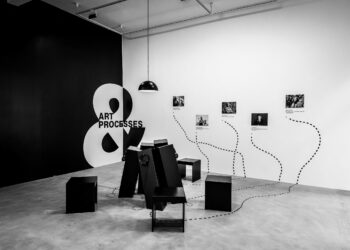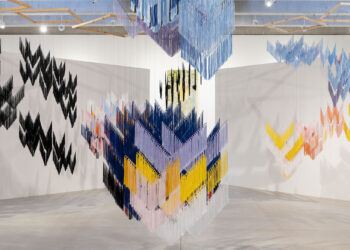Over a period of the past three years, the Joburg Contemporary Art Foundation (JCAF) has embarked on a process of profiling women artists with the aim of repositioning art, its practice and history through the lens of the Global South.
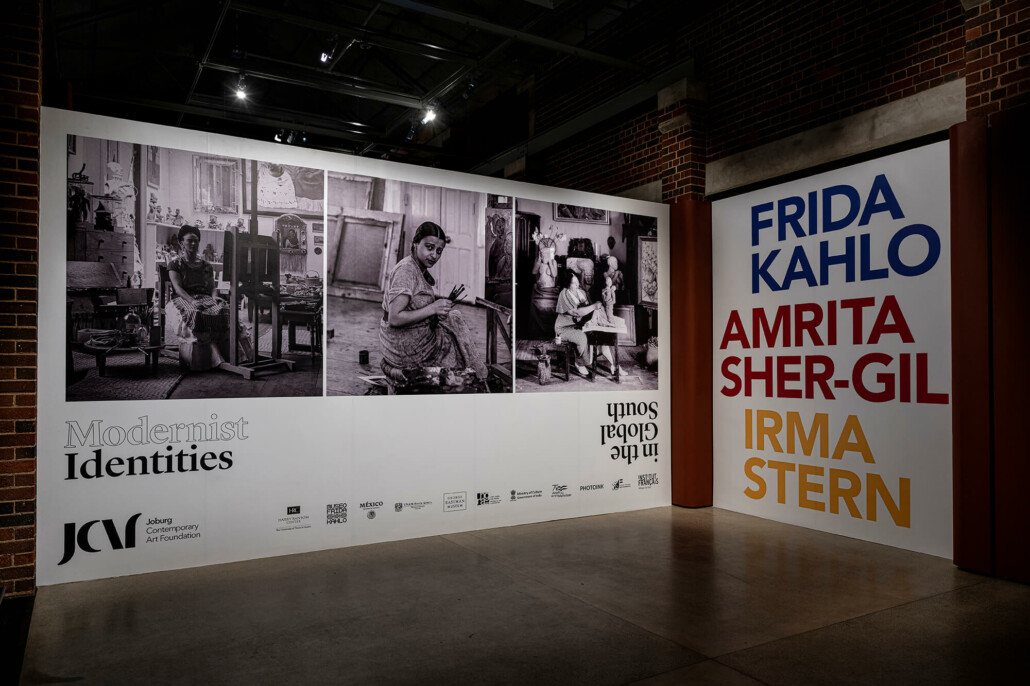
Installation view of exhibition entrance. Photographer: Graham De Lacy. Courtesy of JCAF
The final and definitive exhibition in this series – ‘Kahlo, Sher-Gil, Stern: Modernist Identities in the Global South’ – opens to the public on 25 October 2022 and is the culmination of four years of research, travel and loan negotiations.
The exhibition is arguably one of the most exciting events on the annual art calendar, because, for the most part, local audiences will never have had the opportunity to see paintings by Frida Kahlo or Amrita Sher-Gil in person.
Why then, one might ask, have these three particular artists been drawn together in the final iteration of the series?
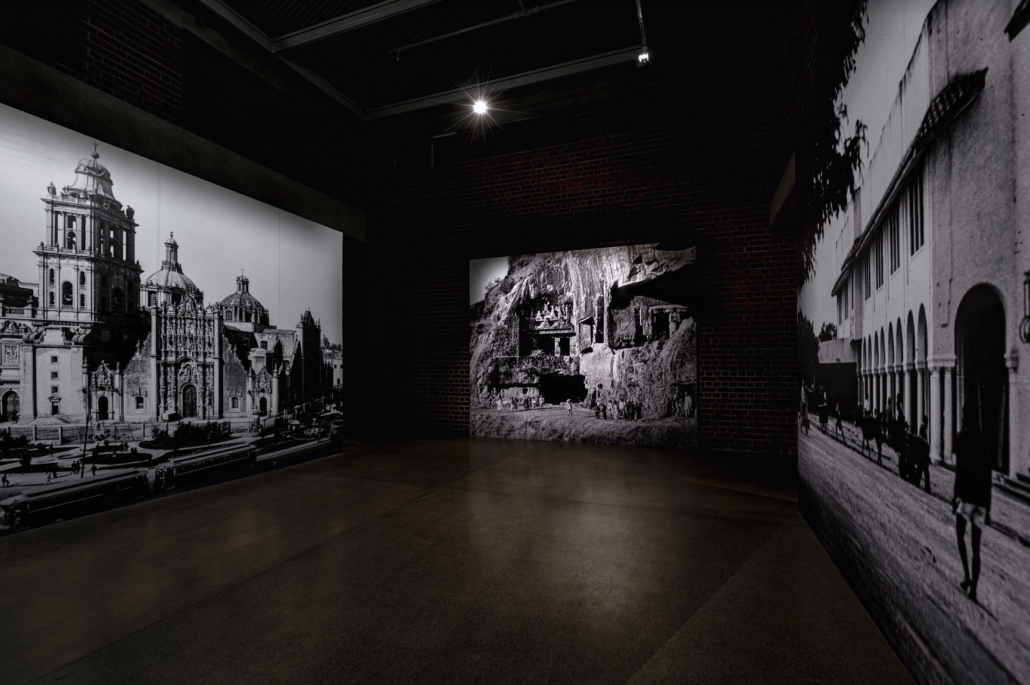
Installation view of ‘Part 1 Historical Background’. Photographer: Graham De Lacy. Courtesy of JCAF.
The lives of Kahlo, Sher-Gil and Stern overlap in a decade that lay between the two World Wars. From approximately 1930 to 1941, they were all affected in various ways by the grand unfolding of historical events between the end of colonialism and the advent of nationalism in Mexico, India, South Africa and the Congo.
In addition, all three artists have in common a mixed heritage that is inevitably represented in their work: Frida Kahlo was born in Mexico City to an immigrant German father and a Spanish-Mexican indigenous mother, Amrita Sher-Gil was born in Budapest to an aristocratic Sikh Indian father and a Hungarian-Jewish mother, while Irma Stern was born in Schweizer-Reneke (in the then Transvaal) to immigrant German-Jewish parents.
“The exhibition asks how these three pioneering artists explore this multiplicity in portraits of themselves and others,” says Clive Kellner, Executive Director of JCAF. “Kahlo, Sher-Gil and Stern all construct a self through an imagined identification with indigenous women. Drawing from aspects of traditional cultures, they created modern hybrid identities against the backdrop of evolving nationalisms across three continents in the Global South.”
“These were not artists who reacted against the world through direct political commentary. Instead, they sought to express personal experience as a representation of political realities.”
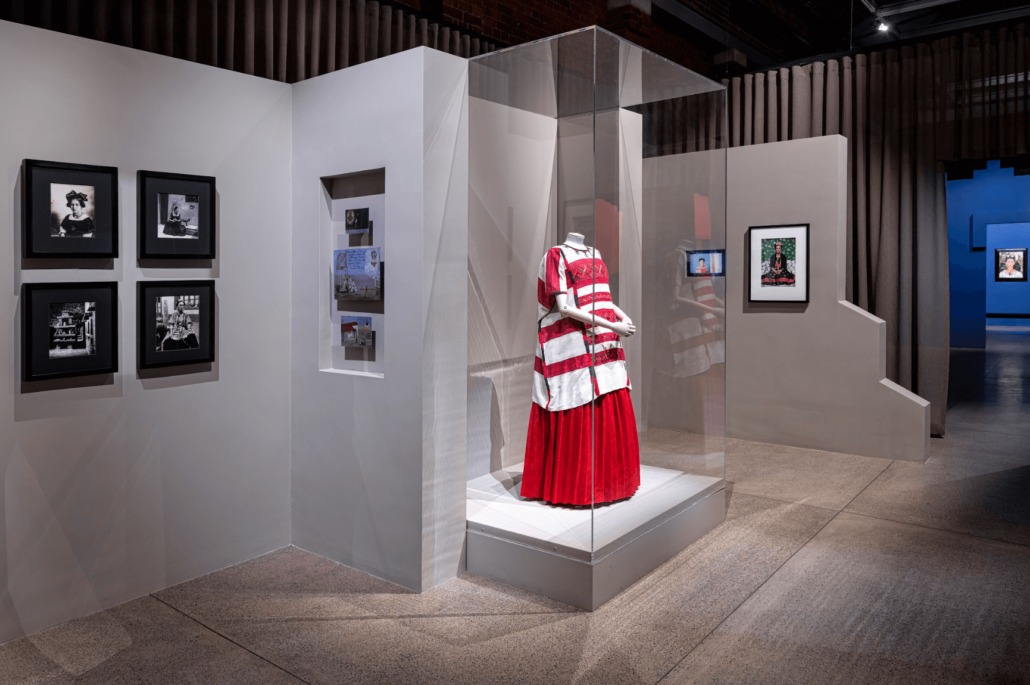
Installation view of Part 2 Identity Formation, Frida Kahlo. Photographer: Graham De Lacy. Courtesy of JCAF
Kellner elaborates by saying that Kahlo transformed her own pain and suffering by representing herself as an indigenous icon while Sher-Gil located her identity in the poor and silenced, but in the process helped to formulate Indian modernist painting. Stern, on the other hand, evoked the Black body as a translation of her impoverished self-image but at the same time created a space for herself as a pioneer of South African modernism.
The beauty of ‘Kahlo, Sher-Gil, Stern: Modernist Identities in the Global South’ is that the exhibition unfolds in three different content-rich parts and the final section consists – quite simply – of a single painting by each artist.
The exhibition design references the cultural and architectural heritage of each artist: the Pre-Columbian architecture of Mexico for Kahlo, Sikh and Mughal architecture in India for Sher-Gil, and Watusi Congo vernacular architecture for Stern. A simplified form is abstracted from the architecture to produce a singular motif that represents the artists, and offers a visual path for guests to follow. Similarly, one colour has been selected for each artist: for Kahlo, a blue based on her house Casa Azul; for Sher-Gil, the red earth pigment of India depicted in her paintings; and for Stern, a yellow representing the sun of Africa and used in several of her paintings.
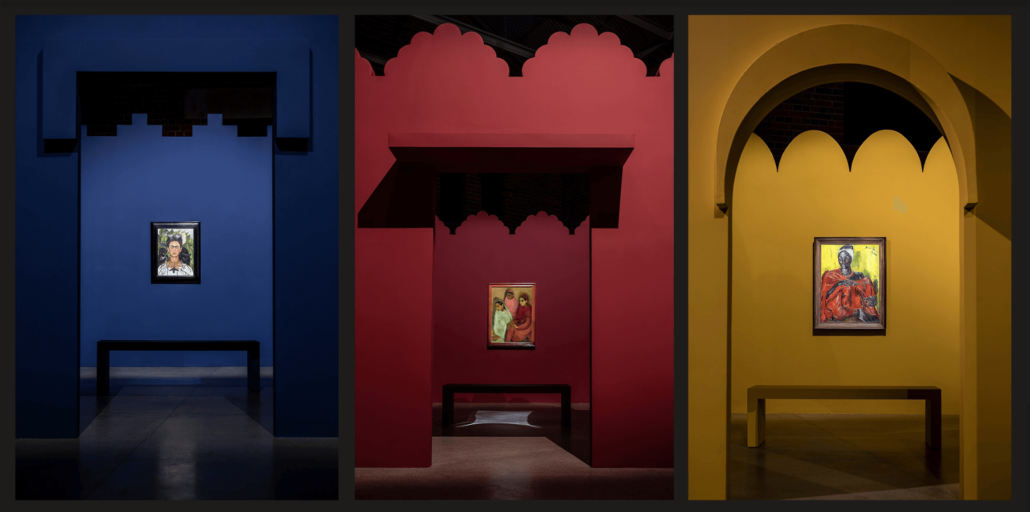
Installation view of the three rooms in Part 3 Portraits and Self Portraits. Photographer: Graham De Lacy. Courtesy of JCAF.
Part 1 introduces the socio-political background events that were occurring during each of the artist’s lives as pioneers of modernity in the Global South.
Part 2 introduces documentary material comprised of photographs, films, diaries and objects that situate each artist’s practice within specific personal and socio-cultural contexts. The content reveals a transformative narrative for each artist, from childhood into adulthood and from early European influences to that of an embodied local indigenous identity formation.
Part 3 consists of the three paintings, each contained within its own uniquely designed self-contained space based on the contextual architectural motifs.
“This exhibition,” concludes Kellner, “explores ways in which these extraordinary artists were shaped by the histories that made them and how they too helped to shape history.”
The exhibition will be on view from the 25th of October 2022 until the 22nd of February 2023. For more information, please visit the Joburg Contemporary Art Foundation.

